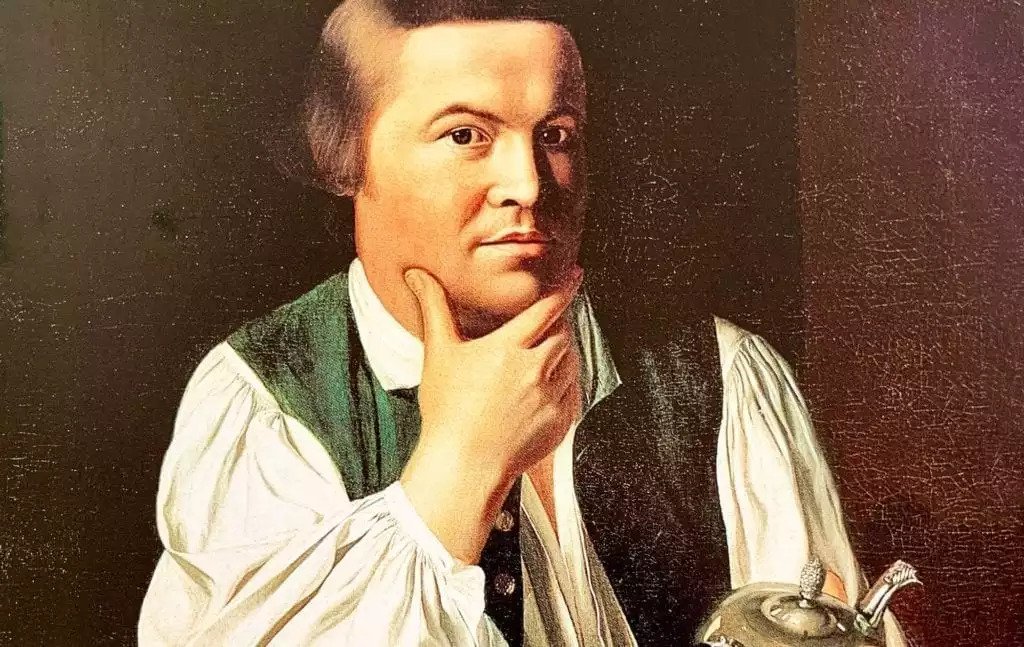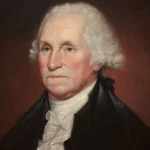
Paul Revere was born on January 1, 1735, in Boston, Massachusetts. He was the son of a French Huguenot immigrant who changed his name to Paul Revere after coming to America. Revere became a skilled silversmith and worked as an apprentice to his father before becoming a master craftsman.
In addition to his work as a silversmith, Revere was also an engraver, copperplate printer, and dentist. He was a prominent member of the Sons of Liberty, a political group that opposed British rule in the American colonies. Revere was known for his fiery speeches and his passionate advocacy for American independence.
Revere is famous for his “midnight ride” on April 18, 1775, during which he warned colonial militia members of an impending British attack. The phrase “The British are coming!” is often attributed to Revere, but in fact, he never used those exact words. He actually said, “The regulars are coming out.” Revere’s ride was immortalized in Henry Wadsworth Longfellow’s poem “Paul Revere’s Ride.”
One of Revere’s most famous engravings was the “Boston Massacre” print, which depicted the shooting of five colonists by British soldiers on March 5, 1770. Revere’s print helped to fuel anti-British sentiment and was instrumental in the growing movement for independence.
In 1776, Revere was commissioned by the Continental Congress to design and create a seal for the new United States. Revere’s design featured a shield with a crest of an eagle and a banner with the Latin phrase “E Pluribus Unum,” which means “Out of many, one.”
During the American Revolution, Revere was captured by the British while on a mission to deliver intelligence to the Continental Army. He was held captive for several months but was eventually released in a prisoner exchange.
Revere was also an early advocate for the abolition of slavery in the United States. As a member of the Massachusetts Society for Promoting the Abolition of Slavery, Revere was involved in efforts to end the practice of slavery in Massachusetts and other parts of the country. He wrote several articles in support of the cause, arguing that slavery was a violation of basic human rights and a stain on the American ideal of freedom.
In addition to his work as a craftsman and patriot, Revere was also an entrepreneur who played an important role in the early industrialization of America. He established a foundry in Canton, Massachusetts, which produced a wide variety of metal goods, including bells, cannons, and stove plates. The foundry was one of the first of its kind in the United States and helped establish the country as a major producer of metal goods. Revere’s success as an entrepreneur was due in part to his innovative spirit and willingness to take risks, qualities that he also demonstrated in his work as a patriot and abolitionist.
Revere’s legendary “midnight ride” remains one of the most celebrated events of the American Revolution. Despite encountering numerous obstacles and challenges along the way, Revere was able to complete the ride with remarkable speed and efficiency. He rode from Charlestown to Lexington, Massachusetts, a distance of about 13 miles, in just under two hours, alerting colonial militias and citizens of the impending British attack.
Revere was a key member of the Boston Committee of Correspondence, an organization that played a critical role in coordinating opposition to British authority, in addition to his daring as a rider. The committee, which included other renowned patriots such as Samuel Adams and John Hancock, exchanged letters and information with other colonies in order to assist generate support for the American cause. Revere’s participation in the committee represented his genuine dedication to the ideas of liberty and democracy, as well as his confidence in the transformative potential of collective action.
Although Revere is often celebrated as the lone rider who warned of the British attack on April 18, 1775, he was not alone in his efforts. William Dawes also rode to Lexington that night, and Samuel Prescott joined the pair after they were stopped by British soldiers. The three riders worked together to spread the warning of the impending attack, demonstrating the spirit of cooperation and solidarity that would come to define the American Revolution. Revere’s role in this historic event has cemented his place in American folklore, and his legacy as a patriot, entrepreneur, and abolitionist continues to inspire generations of Americans today.
Revere was an active member of the Massachusetts Marine Society in addition to his prominent political and military accomplishments. As a member of this group, he worked relentlessly to promote the welfare of seafarers and their families, understanding the critical role that these people had in the colonies’ economy and security.
Revere’s legendary “midnight ride” is widely celebrated as a defining moment in American history. However, many are not aware that this was not the first time he had warned of a British attack. In September 1774, he rode to Portsmouth, New Hampshire, to warn of an impending British naval attack, demonstrating his unwavering commitment to the cause of American independence.
Tragically, Revere experienced personal loss in the midst of his public service. His first wife, Sarah Orne, passed away in 1773, leaving him to raise their children alone. Revere later married Rachel Walker, and the couple went on to have eight children together. Despite his personal challenges, Revere remained deeply committed to his family and community, and his love for them is reflected in his writings and actions.
Revere’s faith was also an important part of his life. He was an active member of the First Church of Christ in Boston and served as a deacon for many years, using his position to help others and spread the message of hope and redemption.
Although Revere’s famous “midnight ride” was widely celebrated, it was not without its challenges. Revere was captured by British soldiers in Lexington and questioned about his mission, demonstrating the risks and dangers that he and other patriots faced in their efforts to secure American freedom.
Revere was a participant of the Boston Tea Party, a group who opposed British taxation on tea by spilling tea into Boston Harbor, in addition to his political and military actions. Revere’s participation in this historic event indicated his great dedication to the cause of American freedom and his readiness to take decisive action to safeguard his fellow citizens’ liberties.
Revere’s skill as a mechanic and craftsman was widely recognized, and he was often called upon to repair and build machinery. His expertise in this area was crucial to the success of many of his military and entrepreneurial ventures, and he continued to innovate and experiment throughout his life.
Revere’s membership in the Massachusetts Lodge of Saint Andrew and Freemasonry reflected his interest in the mystical and spiritual aspects of life. He was initiated into the organization in 1760 and remained an active member throughout his life, using his position to help others and promote the values of brotherhood and community.
Revere’s son, Paul Jr., was also deeply involved in the Revolutionary War and served as a major in the Continental Army. His contributions to the cause of American independence reflected the family’s deep commitment to freedom and democracy.
Revere was a superb horseman who liked racing his horses, in addition to his many abilities and accomplishments. His love of animals and environment represented his strong connection to nature and respect for life’s basic joys.
Revere’s famous “midnight ride” was actually part of a larger network of riders who were spreading the news of the British attack. Revere was just one of many brave patriots who risked their lives to ensure that their fellow citizens were prepared for the coming conflict, demonstrating the strength and resilience of the American spirit in the face of adversity.








